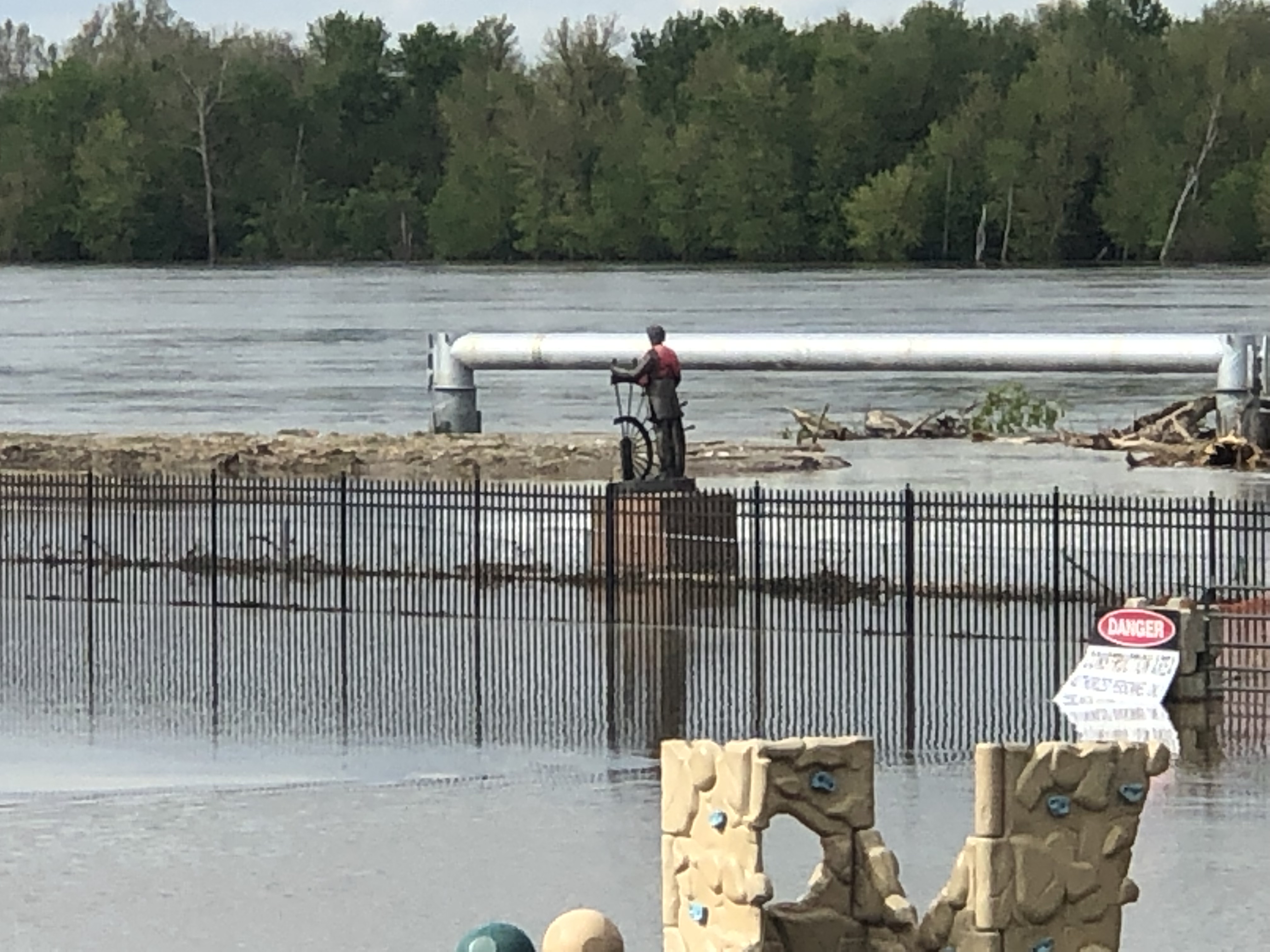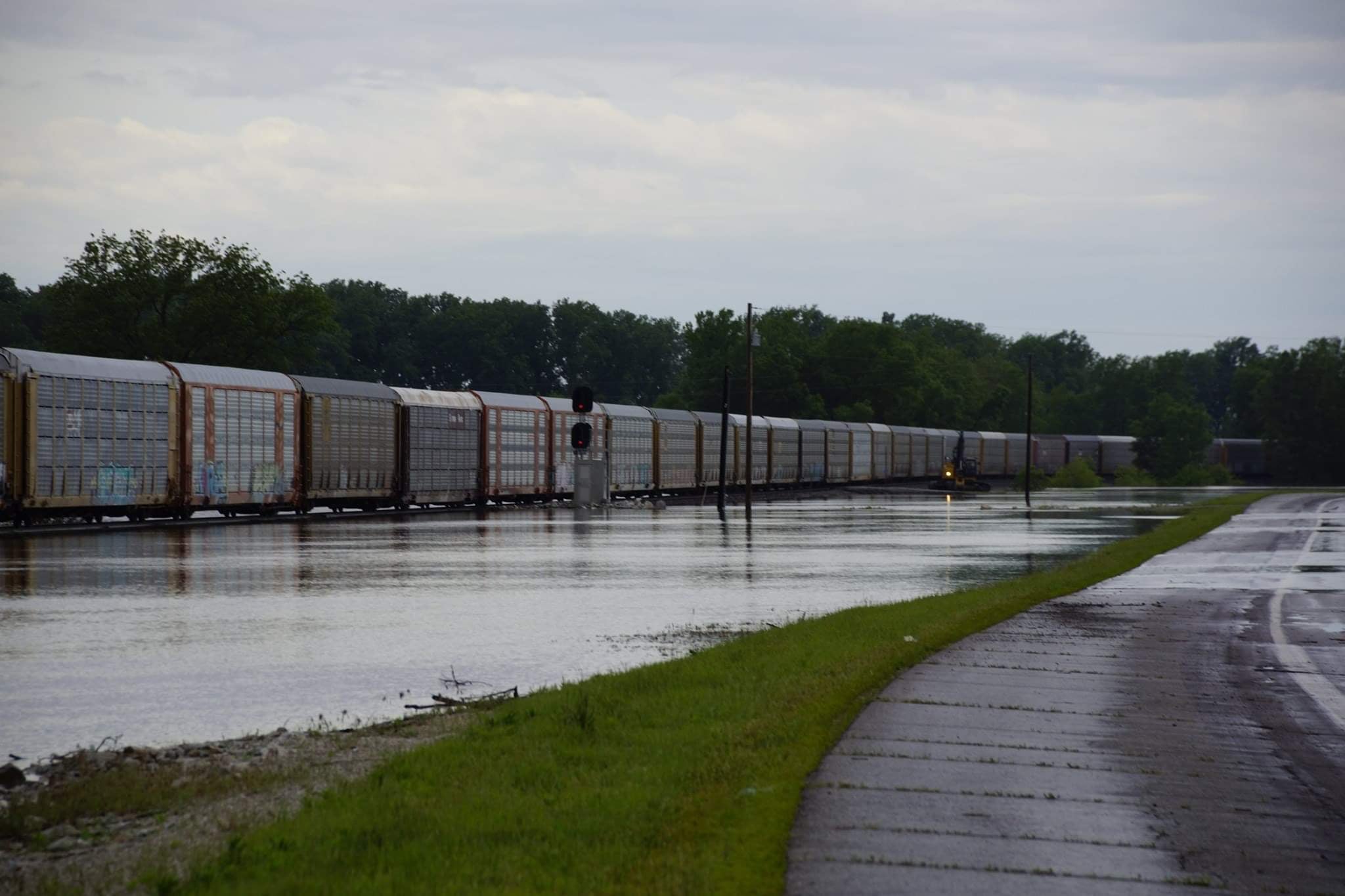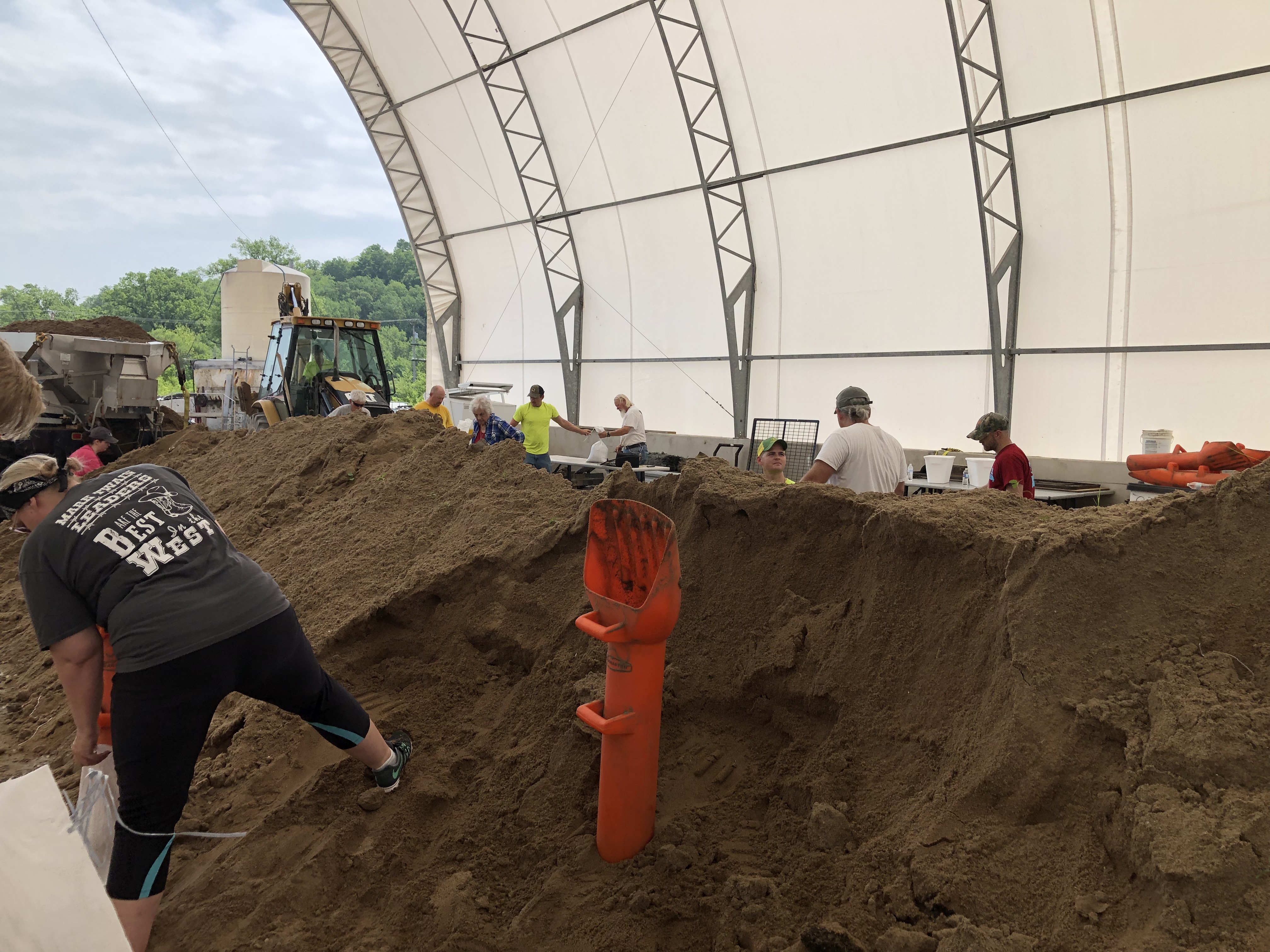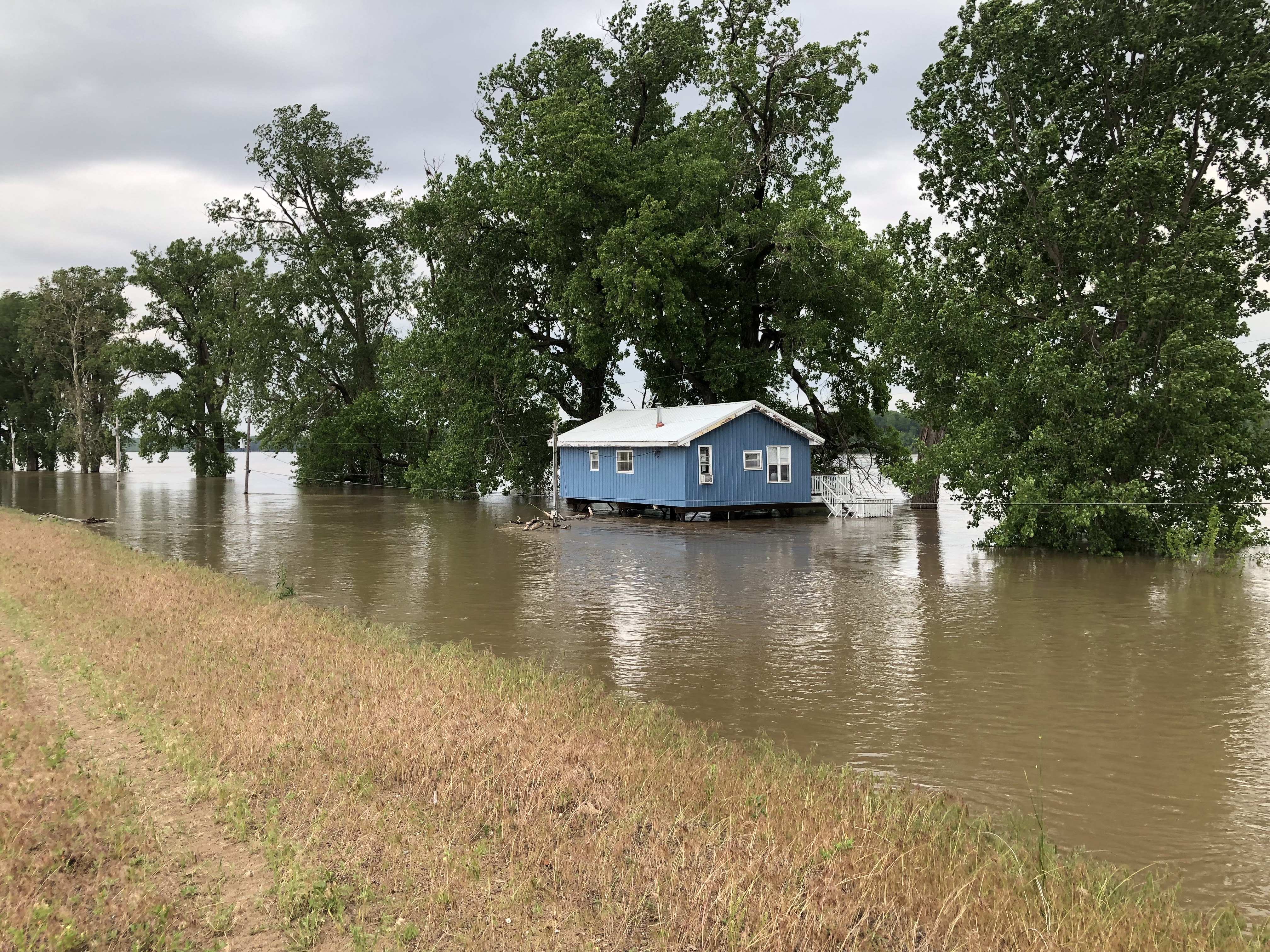As more storms and rainfall sweep across northern Missouri — threatening already flooded areas — meteorologists and lawmakers are begrudgingly muttering a year many would soon rather forget: 1993.
Communities particularly situated along the Missouri and Mississippi Rivers have already been inundated with heavy rains and floods, greatly impacting farming and other businesses. With more rain coming this week — especially to northern Missouri — Missourians have been rushing to prepare for potentially historic floods.
More damaging storms and rain swept through northern Missouri and southern Iowa — which feeds into the Missouri River — Tuesday. Rain is expected to continue this week, moving south through central and southeastern Missouri, according to Kevin Deitsch, a meteorologist with the National Weather Service.

“These rains are just prolonging these high river stages,” Deitsch told The Missouri Times. “The Mississippi River looks like where a lot of the worst flooding will be.”
The way forecasts look now, Deitsch said, the flooding could reach the 2nd highest peaks along the Mississippi River of all time — just behind the Great Flood of 1993.
“One thing we don’t like to say around here is ‘93’ because it was the worst, but it’s shaping up like a ‘93’ here.”
The catastrophic flooding during the summer of 1993 lasted for a few months, spanning across multiple states — including Missouri — and 17 million acres, most of which was farmland.
“We’re taking a hard course to 1993,” Rep. Greg Sharpe, who represents the 4th district in northeastern Missouri along the Mississippi River, said Wednesday morning. “We hoped it wouldn’t get back to that level again, but it looks like it’s going to.”
Sharpe’s district, which borders Illinois and Iowa, is heavily agricultural. Some of the smaller rivers in the area are reaching levels the community hasn’t seen in 20 years.
“It’s a pretty bad situation,” he said.

Just south of Sharpe’s district, Hannibal, Missouri, residents spent the majority of Tuesday rushing to put out more sandbags, check on levees, and say prayers as the rain continues across Missouri.
“One thing we don’t like to say around here is ‘93’ because it was the worst, but it’s shaping up like a ‘93’ here,” Rep. Louis Riggs of the 5th district told The Missouri Times. “Everybody hates to see it but the weather patterns with the rain up north…”
“I think some of the levees in that immediate area were built up after that happened and strengthened, so could it be that catastrophic? I’m not certain. But it’s not outside my imagination either, unfortunately,” state Sen. Cindy O’Laughlin, who represents much of northeastern Missouri, told The Missouri Times of the 1993 comparisons.
She stressed how “terrible” and “disheartening” the flooding has been for those communities, specifically pointing to Brunswick and Clarksville as already seeing dire conditions.
A little more to the west is Rep. Peggy McGaugh’s 39th district — which the Missouri River borders as other rivers and creeks flow through. While not downplaying the significance of the calamitous flooding in her district already, she noted many people have since moved their homes to higher grounds since 1993, potentially saving lives. But livelihoods, however, could still be destroyed as water levels continue to rise.
Riggs said a few dozen volunteers, including some as young as 7 years old, have come out to help with the sandbags in his district. And other state lawmakers have called to check in ahead of upcoming storms and have mobilized volunteers to help. State Rep. Dottie Bailey joined others in traveling to Hannibal, where the Missouri National Guard has been dispatched, to help prepare.

The Hannibal Hoots minor league baseball team was set to begin its season this week, but already much of the team’s field — which was built several feet high to avoid flooding — is under water. It’s unclear when the team will be able to start its season, if at all, Riggs said.
“It’s one of those things — it’s what we do, it’s where we live, and we’ve come to accept it as living next to the river,” he said.

O’Laughlin noted Hannibal has a good system in place, but other, smaller communities do not.
“It’s been hard on the [agriculture] community big time,” O’Laughlin said. “Last year we had a drought, and so there was no hay. By the time it started raining again, it was too late, so farmers had to use all the hay they had stockpiled. Then winter stretched on and on … it’s just been terrible. And now, pretty much nobody has their corn in, and it’s rapidly approaching a too late date to plant corn, and now we’ll have to wait for it to dry out to plant beans.”
“It’s just disastrous, really,” she said. “Something like this can devastate a town. It’s a hard time to rebuild, and it’s almost impossible.”
“Something like this can devastate a town. It’s a hard time to rebuild, and it’s almost impossible.”
Aside from farming and infrastructure, meteorologists and those along the flood paths have expressed concerns with how the levees will hold up along the Mississippi River.
A spokesperson for the U.S. Army Corps of Engineers in St. Louis said: “All levees are operating as expected and designed. Some agricultural levees have overtopped, but all are operating as expected and as designed for this level of water.”
But there is some good news, Deitsch said. A drier weather pattern is on the horizon for Missouri’s forecast in the next few weeks — even with a few possible isolated showers and storms.
Earlier this week, Gov. Mike Parson activated the Missouri National Guard to help assist with the flooding and aftermath of major storms and tornadoes that pounded the state.
#Missouri #NationalGuard reinforcing #levee in #Hannibal and Marion County in support of local request to @GovParsonMO, @MoSEMA_ & @MoPublicSafety.@USNationalGuard is community-based organization with success based on strong partnerships.
(Photos by Spc. Christopher Saunders) pic.twitter.com/jqyaTL2Stw
— Missouri National Guard (@Missouri_NG) May 29, 2019
“Missouri has been battling historic flooding since March, which is depleting local resources, and now flooding conditions in many parts of the state are only getting worse,” Parson said in a statement. “In addition, communities from Carl Junction to Jefferson City are facing the challenge of recovering from tornadoes and severe storms, further challenging civilian resources.”
Guard units will be deployed to support Chariton County with sandbagging to reinforce a stressed levee near Brunswick. The Guard will also be staging and utilizing high-water vehicles to support flood response operations in Jefferson City.
Parson declared a state of emergency last week. President Donald Trump already approved a major disaster declaration for earlier flooding this year, and state lawmakers said they plan to request additional federal aid.

Kaitlyn Schallhorn was the editor in chief of The Missouri Times from 2020-2022. She joined the newspaper in early 2019 after working as a reporter for Fox News in New York City.
Throughout her career, Kaitlyn has covered political campaigns across the U.S., including the 2016 presidential election, and humanitarian aid efforts in Africa and the Middle East.
She is a native of Missouri who studied journalism at Winthrop University in South Carolina. She is also an alumna of the National Journalism Center in Washington, D.C.
Contact Kaitlyn at kaitlyn@themissouritimes.com.







